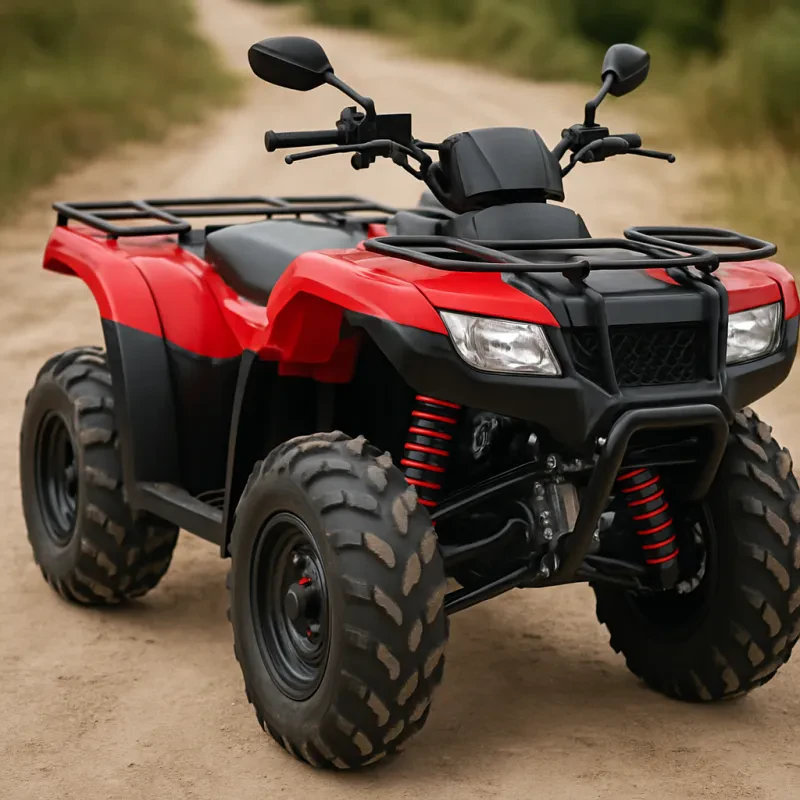Another consideration in your ATV tire replacement decision is the weather conditions in your area. If you often face wet or muddy environments, look for tires specifically designed for such conditions. These tires usually have deeper treads and wider gaps that help in expelling mud and increasing grip. Conversely, if you ride in dry, sandy, or loose terrains, you might want to invest in tires that feature paddles or a more streamlined design to maximize performance.
Don’t overlook the importance of tire size and fitment when it comes to ATV tire replacement. Every ATV model has specifications for the size of tires it can accommodate, which can impact the vehicle's overall handling and performance. Be sure to check your owner's manual for the recommended tire sizes and ensure that your chosen tires maintain these dimensions for optimal safety and performance.
Finally, consider your riding style and frequency. If you ride frequently or engage in high-performance activities, investing in higher-quality tires may be worth the extra cost. Premium tires often offer better handling, wear resistance, and overall performance, which can enhance your riding experience. Remember, the right tires are one of the key factors in mastering ATV tire replacement and enjoying all that off-road adventures have to offer.
Essential Tools for Tire Replacement
When it comes to ATV tire replacement, having the right tools at your fingertips can make the process quick and hassle-free. Whether you're a seasoned rider or just starting out, a solid toolkit ensures you can tackle tire changes with confidence. Let's explore some essential tools that will set you up for success!
First and foremost, you'll need a set of jack stands designed for ATVs. These sturdy supports help lift your vehicle off the ground, making it easy to access the tires. A hydraulic jack is another must-have, as it allows you to lift the ATV smoothly and securely. Pair these with wheel chocks to prevent any movement during the replacement process. Safety should always come first!
A lug wrench is another crucial tool for tire replacement. This handy tool helps you remove and tighten the lug nuts that secure your tires in place. Look for a wrench with a comfortable grip and the right size for your ATV's lug nuts. Additionally, a tire iron is useful to provide extra leverage if you encounter stubborn lug nuts that won't budge.
Finally, don’t forget about tire sealant and a portable air compressor. Tire sealant can help you fix small punctures quickly, while an air compressor ensures your new tires are properly inflated before hitting the trails. With these essential tools for ATV tire replacement, you’ll be well-prepared to maintain your ATV and enjoy your rides without any worries!
Step by Step Replacement Guide
Replacing your tires is an essential part of ATV maintenance, and following a simple step-by-step approach can make the process easier than you think. To start your ATV tire replacement, gather your tools: a lug wrench, a jack, and a tire iron. Once you have everything ready, find a flat, level surface to work on for safety.
Begin by loosening the lug nuts on the tire you need to replace. It’s best to do this while the tire is still on the ground to avoid any movement. Turn the lug wrench counterclockwise and loosen all the nuts but do not remove them completely yet. Once loosened, use the jack to lift your ATV off the ground, making sure it's stable before going any further.
Now that your ATV is safely elevated, remove the loosened lug nuts and take off the flat tire. Place the new tire onto the hub and align it with the holes. Hand-tighten the lug nuts onto the bolts, ensuring the tire is securely fastened. It’s important to tighten the nuts in a crisscross pattern to ensure an even fit.
Lower your ATV back to the ground and then fully tighten the lug nuts with the wrench. Make sure they're snug, as loose nuts can lead to tire issues later on. Finally, check the air pressure in your new tire, and you're all set to hit the trails. With this step-by-step guide, ATV tire replacement becomes a straightforward task, keeping your rides safe and enjoyable.
Tips for Maintaining Your New Tires
Maintaining your new tires is essential for getting the most out of your ATV. After undergoing an ATV tire replacement, it’s important to develop good habits that will extend the life of your tires. One of the first tips is to regularly check the air pressure. Tires that are under-inflated can wear unevenly and lead to blowouts, while over-inflated tires can reduce traction. Make it a routine to check your tire pressure before every ride, and adjust it according to the manufacturer's recommendations.
Another crucial tip is to rotate your tires. Just like with car tires, ATV tires can experience uneven wear, especially if you're frequently riding on different terrains. Rotating tires helps ensure even wear and prolongs the lifespan of all four tires. A good rule of thumb is to rotate them every few hundred miles or after every few rides, depending on how often you use your ATV.
Don't forget about cleaning your tires and checking for damage. After each ride, take a moment to wipe off mud and debris. This simple step will prevent buildup that can cause long-term damage. It's also a good chance to inspect your tires for any nicks or cuts that may have occurred during your ride. Catching these issues early can save you from more significant repairs down the line, especially following an ATV tire replacement.
Lastly, pay attention to your riding habits. Aggressive riding can lead to quicker tire wear. Try to be mindful of your speed and how you handle your ATV on different surfaces. Smooth, controlled movements can decrease the stress on your tires, helping them last longer. By implementing these tips, you’ll not only maintain your new tires but also improve your overall riding experience.

